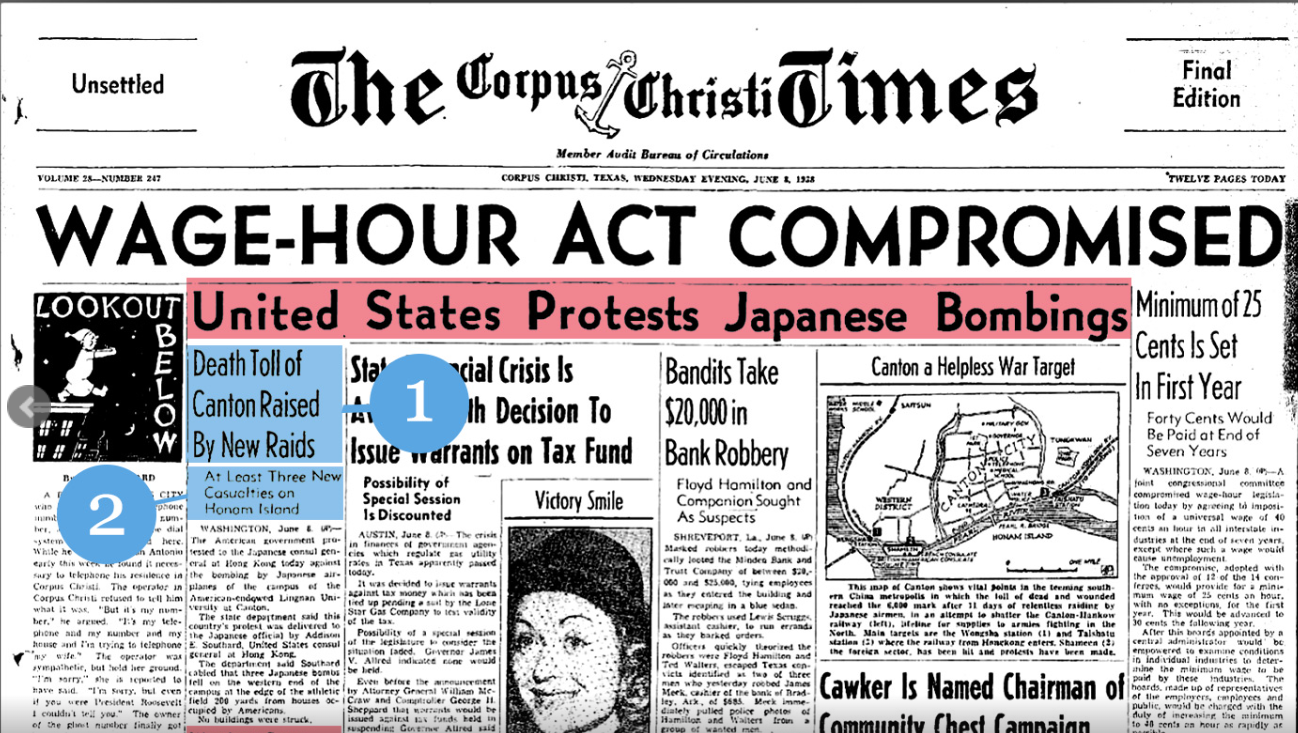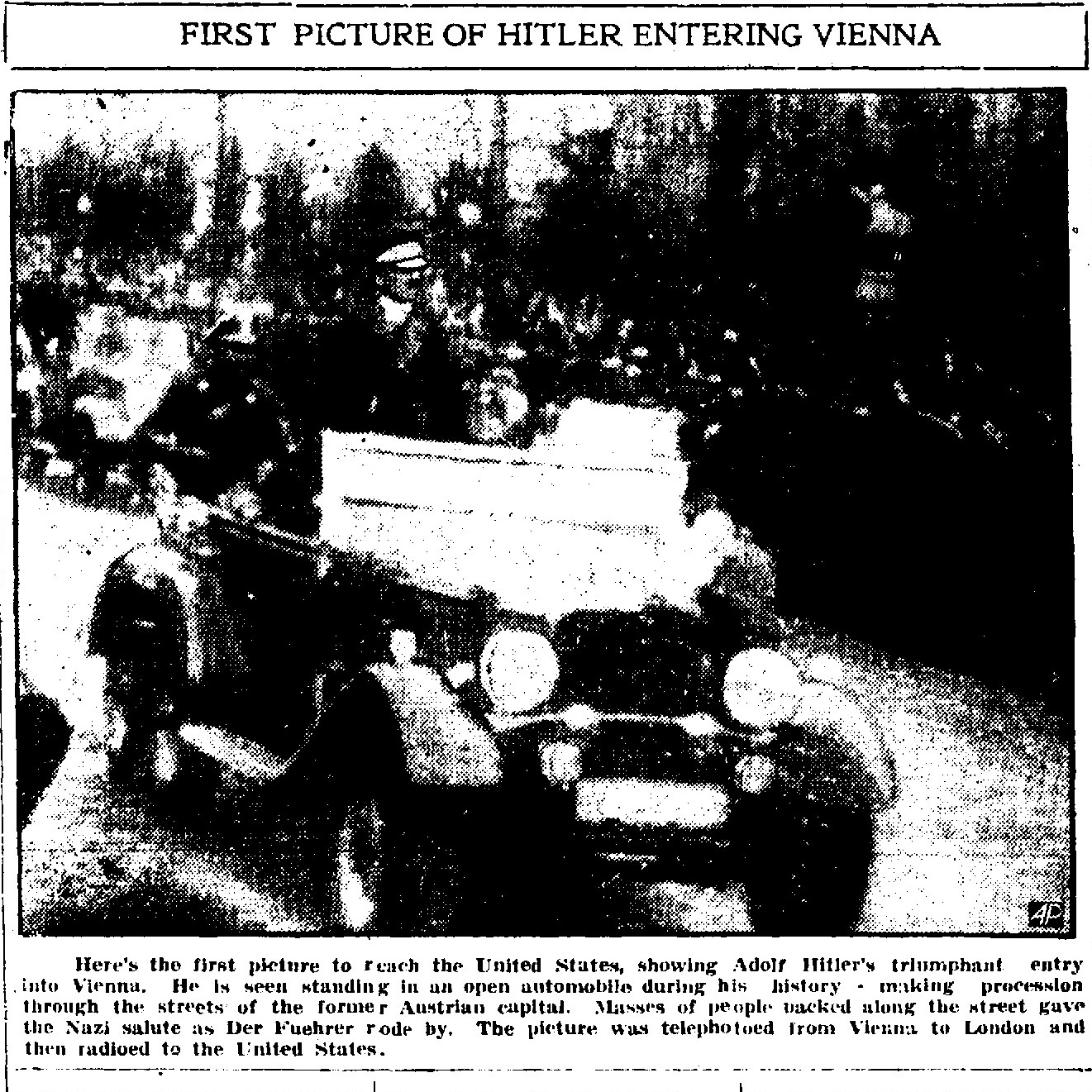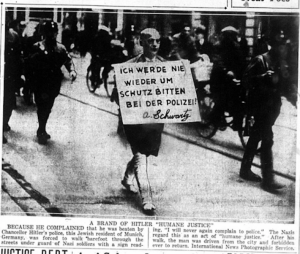 How to read old newspapers
How to read old newspapers
The Associated Press in Nazi Europe: Censorship, Survival or Collaboration?
April 12, 2016
On March 30, Philip Oltermann of the Guardian published an article that attracted immediate attention. “Revealed: how Associated Press cooperated with the Nazis” the headline proclaimed. The first sentence of the article was equally stunning: “The Associated Press news agency entered a formal cooperation with the Hitler regime in the 1930s, supplying American newspapers with material directly produced and selected by the Nazi propaganda ministry, archive material unearthed by a German historian has revealed.”
History is an Argument about the Past
The claim is that of historian Harriet Scharnberg. She explains that the Associated Press was the only western news agency able to stay open under Hitler’s Germany until 1941 when the United States entered the war. While the agreement allowed the AP to collect and disseminate important news to the west about events within Nazi controlled territory, the deal also allowed the Nazis to exert influence over the nature of that reporting. For instance, the AP signed the Schriftleitergesetz (editor’s law) and agreed to hire reporters who worked for the Nazi party’s propaganda division. Furthermore, Hitler personally chose photographs from these reporters to distribute to western countries via the AP.
Fact-checking via History Unfolded
In other words, the claim is that Nazi leadership influenced reporting from the AP, leaving the west with a censored picture of what was truly happening in Europe. Did US newspapers in the 1930s and 1940s lack vivid photographs about the Holocaust? And if so, is the dearth of images due to the Associated Press not sharing photographs with American newspapers?
It’s hard to say, given that our database is far from comprehensive. Moreover, it is very difficult, if not impossible, for us to know whether photographs were available to the American papers and editors chose not to use or feature them, or whether the images never made it from outside the German Reich in the first place.
Here are some examples of photographs published in American newspapers in the 1930s and 1940s that have been uploaded to the History Unfolded site.
'Seeing' the Anschluss
From the Georgia Thomasville Times-Enterprise, citizen historian Donna H. submitted an article with this photograph. The caption states that this was the first photo reaching the United States after Hitler’s annexation of Austria on March 12, 1938.

Hitler In Hero's Return From His Austrian Coup. Thomasville Times Enterprise Thomasville, Georgia. 1938-03-16
Images from Kristallnacht
Slightly over half a year later, on November 9, 1938, violence against Jews in German-controlled areas broke out after Herschel Grynszpan, a 17 year old Polish Jew, shot and killed German minister Ernst vom Rath. While the event appeared unplanned, German propaganda minister Joseph Goebbels organized the pogroms. The event, known as Kristallnacht (Night of the Broken Glass), was widely covered in American newspapers. For example, in the Texas Corpus Christi Times, citizen historian Lael F. found a photograph of Herschel Grynszpan, taken from the Associated Press.

Kills Nazi. The Corpus Christi Times Corpus Christi, Texas. 1938-11-10
The verdict?
But what about images from other wire services? Or images not contributed by a wire service at all? We have photographs in the History Unfolded database of Jews wearing the “Star of David” after the Nazis forced all Jews in Germany and German-occupied Europe, beginning in September 1940. One of them, contributed by Charles S., has the title caption, “A Marked Man.” None of the photographs were from the Associated Press, however. Few of the AP articles include images of detailed or graphic content surrounding the Holocaust.
Explore more
 How to read old newspapers
How to read old newspapers
 The Story of Dr. Michael Siegel
The Story of Dr. Michael Siegel